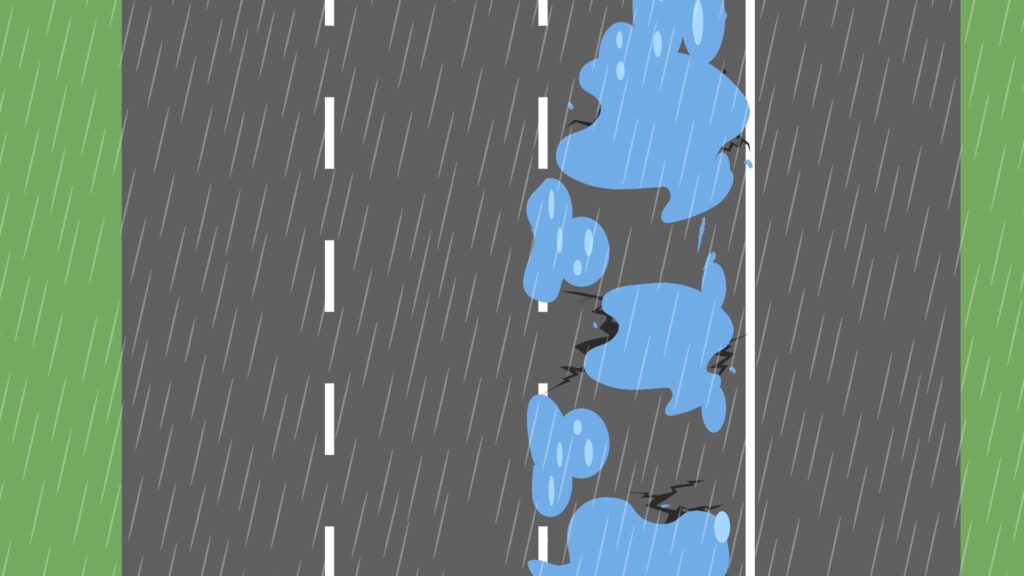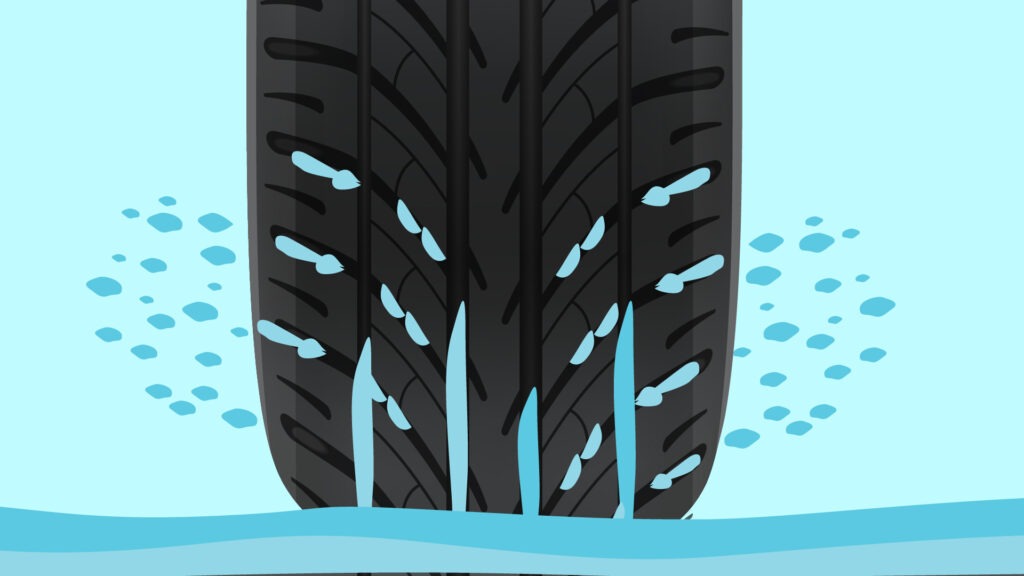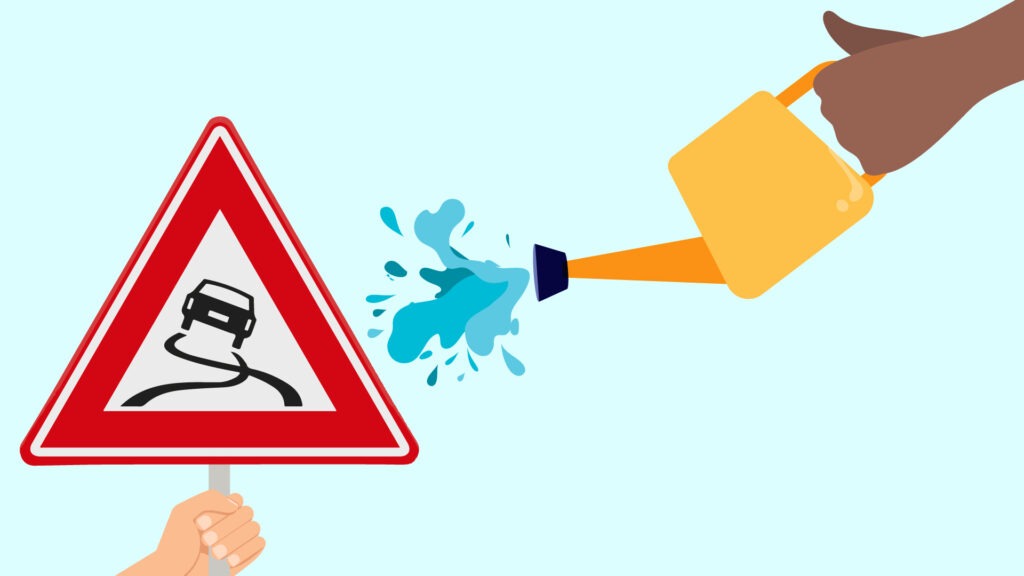Aquaplaning and Rutting: When Rain and Roads Become BFF

Welcome to a crucial topic for anyone preparing for the CBR exam: aquaplaning and rutting. Don’t worry, we will explain these terms simply so that you can understand them effortlessly and score important marks in your exam.
What is Rutting?
Sounds complicated, right? But it’s actually very simple. Rutting simply refers to wear and tear of the road surface due to intensive traffic. In fact, it simply means that the road is in poor condition and you are dealing with a worn surface.
Where do you often encounter rutting?

Well, mainly in the third lane! Why? Because driving on the right is mandatory, and it is common knowledge that heavier vehicles such as trucks and buses prefer this lane, resulting in faster wear and tear of the road surface.

Take one of our courses
Pass first time with our impressive 97% pass rate. 25,000+ successful candidates. Your driver’s license, your success story, starts here!
What is Aquaplaning?

Sounds like a fancy word, but it’s actually quite easy to understand. “Aqua” means water, and “plane” refers to the loss of road grip due to water under the tires. In other words, aquaplaning creates a thin layer of water between the tires and the road surface, causing a loss of grip.
What is the relationship between aquaplaning and rutting?

Very simple! A worn road surface (rut formation) retains more water during rainfall (aquaplaning), because the water remains in the ruts. So where there is rutting, there is a greater chance of aquaplaning, and where aquaplaning occurs, there is also a greater chance of rutting. They are like best friends, always in action together.
By understanding how aquaplaning and rutting are linked, drivers can better prepare and drive more safely, especially in poor weather conditions.
So, remember this essential information for your CBR exam and be well prepared for any situation on the road!

